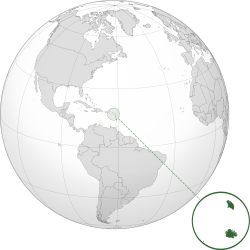Citizenship by investment programs engage the contender to rapidly gain citizenship with no vital home period, or simply a short apparent period assessed in days or weeks. These are oftentimes known as “splendid visas” or “cash-for-ID” programs, presenting without visa travel and possible evaluation benefits. Around twelve countries have citizenship by investment programs. Citizenship by Investment recollects five countries for the Caribbean Antigua and Barbuda, Dominica, Grenada, Saint Kitts and Nevis and Saint Lucia, similarly as Cambodia, Egypt, Jordan, Malta, Montenegro planned to be closed, North Macedonia and Vanuatu.

Countries that have commonly offered citizenship by investment include Austria dead, Comoros shut Cyprus shut and Moldova suspended.
- Dominica
Dominica executed its program in 1993 to allow monetary sponsors the opportunity to procure Dominican citizenship through a guarantee to its Economic Diversification Fund or the securing of a then again upheld undertaking close by a cost. Dominica requires an investment of $100,000 Dominica.
- Malta
The Malta Individual Investor Program, which Henley and Partners were contracted in 2014 by the Government of Malta to design and execute, is correspondingly covered at 1,800 applicants. The base investment for this program is $870,000 with a non-refundable responsibility of $700,000.
- St Kitts and Nevis
St Kitts and Nevis was the main country to offer citizenship by investment, starting in 1984.
- Turkey
Turkey offers a for the most part new program known as Turkish Citizenship by Investment TCBI. Monetary supporters are expected to purchase land most certainly worth US$250,000 and hold it for quite a while OR store US$500,000 in the bank in Turkey for something like 3 years. In the wake of contributing as above and submitting citizenship applications appropriately, a Turkish ID is yielded routinely inside a half year.
History of border control :
In middle-age Europe, global IDs were given since essentially the standard of Henry V of England, as a technique for helping his subjects with exhibiting who they were on new grounds. The earliest reference to these reports is found in the 1414 Act of Parliament. In 1540, permitting travel reports in England transformed into a task of the Privy Council of England, and it was around this time that the articulation “recognizable proof” was used. In 1794, giving British IDs was transformed into crafted by the Office of the Secretary of State. The 1548 Imperial Diet of Augsburg required individuals overall to hold illustrious chronicles for development, at the risk of being dependable and untouchable. During World War I, European lawmaking bodies introduced line distinguishing proof essentials for security reasons, and to control the resettlement of people with significant capacities. These controls remained set up after the convention, transforming into a standard, but problematic, strategy. English voyagers of the 1920s whimpered, especially about joined photographs and real portrayals, which they considered provoked a “horrible dehumanization”.
Starting during the nineteenth century, the Ottoman Empire set up confinement stations on countless lines to control the disease. For example, along the Greek-Turkish line, all travellers entering and leaving the Ottoman Empire would be secluded for 9–15 days. These stations would constantly be checked by furnished guardians. If plague appeared, the Ottoman outfitted power would be passed on to approve line control and screen ailment.

